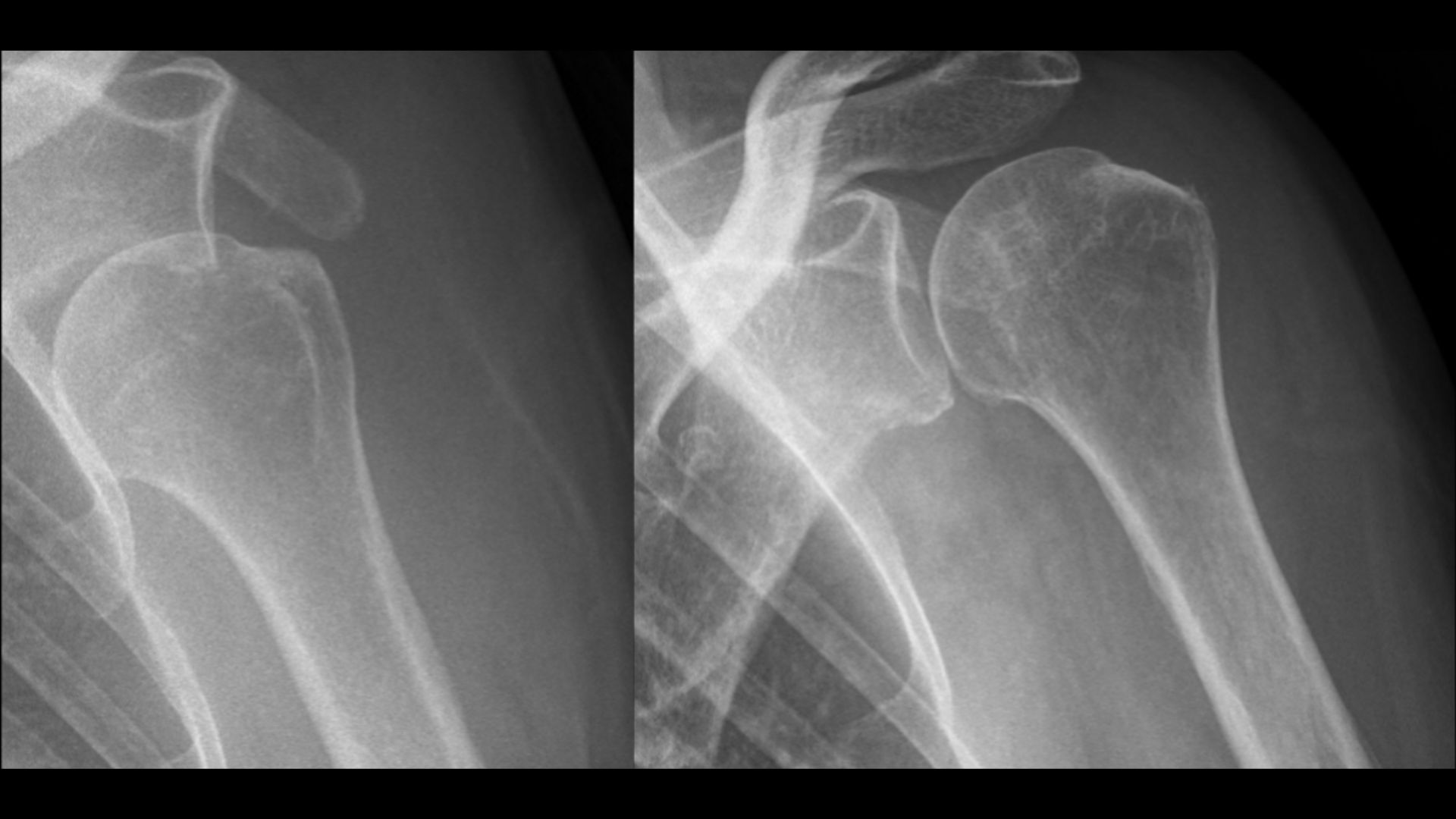Recurrent Shoulder Dislocation
What is Recurrent Shoulder Dislocation?
What is Recurrent Shoulder Dislocation?
Recurrent Shoulder Dislocation is when there is an inability of the stabilizing structures of the shoulder to maintain joint congruence leading to displacement of the humeral head out of the glenoid fossa.
The shoulder joint is the most mobile in the human body, allowing 360° circumduction movements. In this sense, there must be a fine balance between static and dynamic stabilizers and the muscles and tendons that allow this movement so that the head of the humerus remains congruent with the glenoid of the scapula.

What are the causes of Recurrent Shoulder Dislocation?
The main cause of the loss of this balance between stability and mobility is the existence of a trauma to the shoulder that leads to the first episode of dislocation. This first traumatic episode generally leads to injury to the stabilizing structures of the shoulder, which increases the likelihood of new episodes of dislocation, leading to what is called recurrent shoulder dislocation or shoulder instability. In rarer cases, recurrent dislocation is not preceded by any traumatic episode and may be due to hyperlaxity or hypermobility of the patient.
Epidemiology
Epidemiology
The most common form of recurrent shoulder dislocation is anterior dislocation in over 90% of cases.
Recurrence is highly age-related:
- 90% at age 20
- 60% 20-40 years old
- 10% >40 years
Signs and Symptoms of Recurrent Shoulder Dislocation
Signs and Symptoms of Recurrent Shoulder Dislocation
The patient usually describes 1 episode of traumatic dislocation followed by one or more new episodes of dislocation.
- New episodes generally occur more easily than the first episode of dislocation.
- Patients may be asymptomatic between episodes of dislocation or may learn not to dislocate the shoulder by avoiding the movement that causes the dislocation.
- There are patients who, despite not dislocating their shoulder again after the first episode, feel pain and great incapacity when performing abduction and external rotation of the shoulder.
- Patients in whom shoulder dislocation has never been preceded by a traumatic event may describe themselves as having the capacity to dislocate their shoulder.
Diagnosis of Recurrent Shoulder Dislocation
Diagnosis of Recurrent Shoulder Dislocation
Physical examination
Physical examination
Range of mobility usually complete. Positive apprehension test and positive replacement test.
X-ray
X-ray
Allows you to identify the 2 typical injuries of anterior shoulder dislocation:
- Bony Bankart lesion: lesion that occurs in the anteroinferior region of the glenoid
- Hill-Sachs lesion: lesion that occurs in the posterosuperior region of the humeral head
Computerized Tomography (CT)
Computerized Tomography (CT)
Allows for better characterization of the bone lesions described in the radiograph section
Magnetic Resonance Imaging
Magnetic Resonance Imaging
It allows the diagnosis of soft tissue injuries, namely soft tissue Bankart lesion (anterior-inferior labrum injury).
Treatment of Recurrent Shoulder Dislocation
Treatment of Recurrent Shoulder Dislocation
Decision
It will always take into account the number of episodes of dislocation, the patient’s age, profession, sports practice and injuries found in the examinations carried out.
Conservative
Conservative
When to perform it? After a first episode of dislocation.
Treatment options?
Treatment options?
Physiotherapy/Rehabilitation – By strengthening muscles and regaining proprioceptive control, the patient can regain confidence in the dislocated shoulder.
Surgical
When to perform? When the patient has new episodes of dislocation despite conservative treatment, the patient has new episodes of dislocation and/or when the patient is unable to perform his/her daily professional and/or sports activities even without new episodes of dislocation. Procedure/technique:
- Bankart Repair by Arthroscopy – Arthroscopy is a minimally invasive procedure in which a scope/camera is used to observe the entire shoulder joint and in which, through other small incisions, work instruments and suture anchors are introduced to allow the repair of the Bankart lesion, that is, the injured glenoid labrum.
This technique allows the patient to be discharged on the same day (outpatient) or to spend just one night in hospital. - Latarjet operation – This is a classic technique with high surgical success in the treatment of recurrent shoulder dislocation. It consists of osteotomy of the coracoid process and its fixation in the anterior region of the glenoid, thus increasing the anteroposterior diameter of the glenoid and reducing the likelihood of new dislocation.
Postoperative
Postoperative
- The patient can be discharged on the same day or the day after surgery.
- You will need to wear a brachial brace for 15 days, at which point the stitches will need to be removed.
- Passive mobility exercises are permitted the day after surgery.
- A minimum rehabilitation period of 3 months is expected, but can last up to 6 to 9 months depending on the patient and the severity of the case.
How to prevent recurrent shoulder dislocation?
How to prevent recurrent shoulder dislocation?
No scientific study has yet managed to define an effective, non-surgical method of preventing new episodes of dislocation after a first episode.
When to seek an Orthopedic Specialist?
When to seek an Orthopedic Specialist?
After a first episode of dislocation, you should always seek out an orthopedic specialist in the shoulder area.